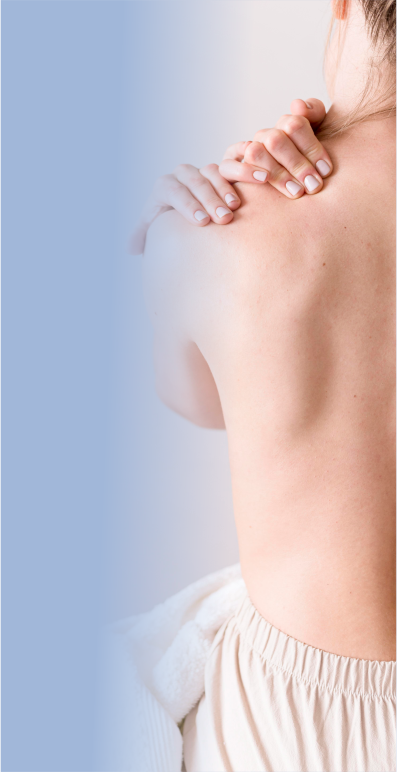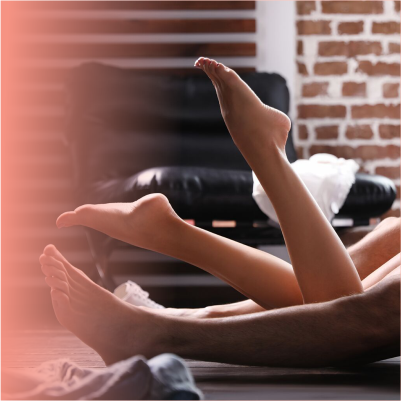Core exercises encompass a variety of movements such as yoga poses, crunches, planks, and other activities engaging additional muscle groups.
Your core muscles play a pivotal role in numerous daily tasks, from pushing a grocery cart to tying your shoes, while also contributing to your balance, posture, and stability.
Contrary to common misconception, the core isn’t solely comprised of abdominal muscles; it also includes muscles in the back and around the pelvis.
Your core, also referred to as the trunk, comprises:
- Erector spinae: This back muscle extends along your trunk, aiding in straightening your posture after bending and facilitating sideways bending and head rotation.
- Rectus abdominis: Known as the “six-pack” muscle, it engages when you bend forward.
- Obliques: Both internal and external obliques assist in trunk rotation and bending.
- Transverse abdominis: Wrapping around the front and sides of the trunk, it stabilizes the pelvis.
- Multifidus: Located in the back, it supports the spine.
Additional muscles contributing to your core include the pelvic floor, diaphragm, glutes, and those attached to the pelvis (hamstrings, hip flexors, and hip adductors).
Maintaining strength in these muscles aids in stabilizing your body, supporting your spine, and improving overall fitness.
Explore the following core-strengthening exercises suitable for all fitness levels.
Table of Contents
- Beginner moves
- Intermediate moves
- Advanced moves
- The bottom line
Beginner moves
For those new to exercise or returning after a hiatus, these beginner moves are a great starting point. If possible, consulting with a personal trainer can help tailor reps and sets to your fitness level and goals.
During these exercises, you’ll often hear the instruction to “tighten your core.” But how do you ensure you’re doing it correctly? One effective technique is to inhale, imagining you’re drawing your belly button toward your spine. Hold this contraction for a few seconds to feel your core engage.
Bridge
This pose targets your glutes, lifting your hips to activate your core while also toning your buttocks and thighs.
- Begin lying on your back with knees bent and feet hip-width apart.
- Keep your hands by your sides, palms down.
- Engage your core and glutes.
- Lift your hips until they align with your shoulders.
- Hold for 10–30 seconds.
- Repeat 3–5 times.
Crunch
A classic core-strengthening exercise, crunches focus on lifting your upper body to engage your abdominal muscles.
- Lie on your back with knees bent and feet flat on the floor.
- Cross your arms over your chest.
- Tighten your core, relaxing your neck and shoulders.
- Lift your upper back while keeping lower back, pelvis, and feet grounded.
- Slowly lower back down.
- Start with 1 set of 8–12 reps.
Supine Toe Tap
This Pilates move activates core muscles while targeting glutes, hips, and legs with minimal pressure on the spine.
- Begin lying on your back, knees bent at a 90-degree angle.
- Keep hands by your sides, palms down.
- Tighten your core.
- Lower your right foot to tap the floor while keeping the left leg still and back flat.
- Raise the right leg back to start.
- Repeat with the left leg.
- Start with 1 set of 8–12 reps.
Bird Dog
Engaging both abdominal and back muscles, this exercise enhances core strength, coordination, balance, and stability.
- Start on all fours, with hands under shoulders and knees under hips.
- Tighten your core.
- Extend your right leg to hip level while simultaneously reaching your left arm to shoulder level, palm facing down.
- Hold, maintaining a neutral spine.
- Repeat with the opposite limbs.
- Start with 1 set of 8–12 reps.
Bicycle crunch
This modified version of the regular crunch targets your obliques, rectus abdominis, and hips effectively.
- Begin by lying on your back, with your left knee bent and drawn toward your chest, while keeping your right leg straight and slightly lifted off the floor. Place your hands behind your neck or the lower part of your head, ensuring not to strain your neck during the exercise.
- With your left knee bent and right leg straight, lift your right shoulder off the floor and bring your right elbow toward your left knee.
- As you lower your right shoulder back to the floor, extend your left leg while bending your right knee and bringing it toward your chest.
- As your right knee moves closer in, lift your left shoulder off the floor and bring your left elbow toward your right knee.
Start with 3 sets of 12 alternate repetitions for an effective workout.
Intermediate moves
As you progress in your fitness journey, challenge yourself with these intermediate-level exercises:
Plank
The plank is a dynamic full-body workout primarily targeting the core while also engaging arms, shoulders, back, glutes, and legs.
- Begin on all fours, with hands positioned below shoulders and knees below hips.
- Extend your legs behind you, maintaining a hip-width distance between your feet. Engage your core.
- Hold the position for 10–30 seconds.
- Repeat for 3–5 sets.
To modify and reduce difficulty, maintain knee contact with the floor while ensuring a straight line from knees to shoulders.
Warrior Crunch
This variation intensifies core engagement while also working lower body muscles such as thighs, glutes, and quads.
- Stand with feet slightly wider than shoulder-width apart and toes turned outward. Place hands behind your head, opening your chest.
- Tighten your core and glutes. Lower into a squat until thighs are parallel to the floor.
- Bend your torso to the side, bringing right elbow toward right thigh. Repeat on the left side.
- Start with 1 set of 8–12 reps.
Bird Dog with Elbow to Knee
Adding fluid movement to the basic bird dog exercise enhances core activation and mobility.
- Begin on all fours, with hands under shoulders and knees under hips.
- Engage your core. Extend your right leg to hip level while simultaneously extending your left arm to shoulder level, palm facing down.
- Bring your right knee and left elbow toward each other, forming a crunch.
- Return to the starting position.
- Start with 1 set of 8–12 reps per side. Repeat on the other side.
Advanced moves
Once you’ve mastered intermediate core exercises, challenge yourself with an advanced routine that pushes your muscles in more complex ways:
Mountain Climber
This dynamic exercise combines plank stability with knee movements, enhancing balance and core strength.
- Begin in a plank position with hands beneath shoulders, core engaged.
- Lift your right knee toward your chest while maintaining a straight back and level hips.
- Return your right leg to the starting position as you simultaneously bring your left knee toward your chest.
- Alternate legs in a fluid motion.
- Start with 1 set of 8–12 reps.
Side Plank with Rotation
An advanced variation of the side plank, this exercise strengthens arms, shoulders, and obliques through rotational movements.
- Lie on your right side with right forearm below shoulder and legs extended, left foot stacked atop the right.
- Lift hips to form a straight line with your body, raising your left arm straight up.
- Rotate torso toward the floor, bringing left arm under your body.
- Rotate torso back to starting position with left arm extended.
- Start with 1 set of 8–12 reps per side.
Turkish Get-Up
This comprehensive movement enhances spinal stabilization and mobility in hips, lumbar, and thoracic spine while strengthening core and shoulders.
- Begin lying on your back with legs straight and arms angled at 45 degrees from sides.
- Bend right leg, placing foot near butt.
- Extend right arm toward ceiling, maintaining a fist with knuckles facing upward for shoulder stabilization.
- Prop yourself onto left elbow by pushing through right heel and left elbow, ensuring chest faces forward.
- Transition into a seated position, engaging abs.
- Slide left leg underneath, aligning knee and ankle with left hand.
- Rise into a kneeling position with left knee and right foot on ground, maintaining right arm overhead.
- Press right foot into ground, bring left leg forward into a lunge position, and stand up.
- Reverse movements until back is on the ground.
- Start with 3–5 reps, gradually increasing weight for added challenge.
The bottom line
In summary, building a strong and stable core is essential for overall fitness and functional movement, regardless of your fitness level. Whether you’re a beginner just starting out or an experienced athlete looking to take your workouts to the next level, incorporating a variety of core exercises into your routine is key to achieving your fitness goals.
For beginners, focus on mastering foundational exercises like planks, dead bugs, and bridges to build core strength and stability while minimizing the risk of injury. As you progress, gradually introduce intermediate moves such as side planks with leg lifts, mountain climbers, and Russian twists with weights to further challenge your core muscles and improve overall athleticism.
For those seeking an advanced challenge, exercises like dragon flags, hanging leg raises, and pike roll-outs offer a way to push the limits of core strength and stability. However, it’s crucial to approach advanced exercises with caution, ensuring proper form and technique to prevent injury.
Regardless of your fitness level, consistency is key. Aim to incorporate core exercises into your workout routine 2-3 times per week, alternating between different exercises to target all areas of the core effectively. Listen to your body, progress at your own pace, and always prioritize quality over quantity.
By prioritizing core strength and stability and incorporating a variety of exercises into your routine, you’ll not only improve your athletic performance but also reduce the risk of injury and enhance your overall health and well-being. So, whether you’re just starting out or looking to challenge yourself with advanced moves, make core training a priority in your fitness journey.







